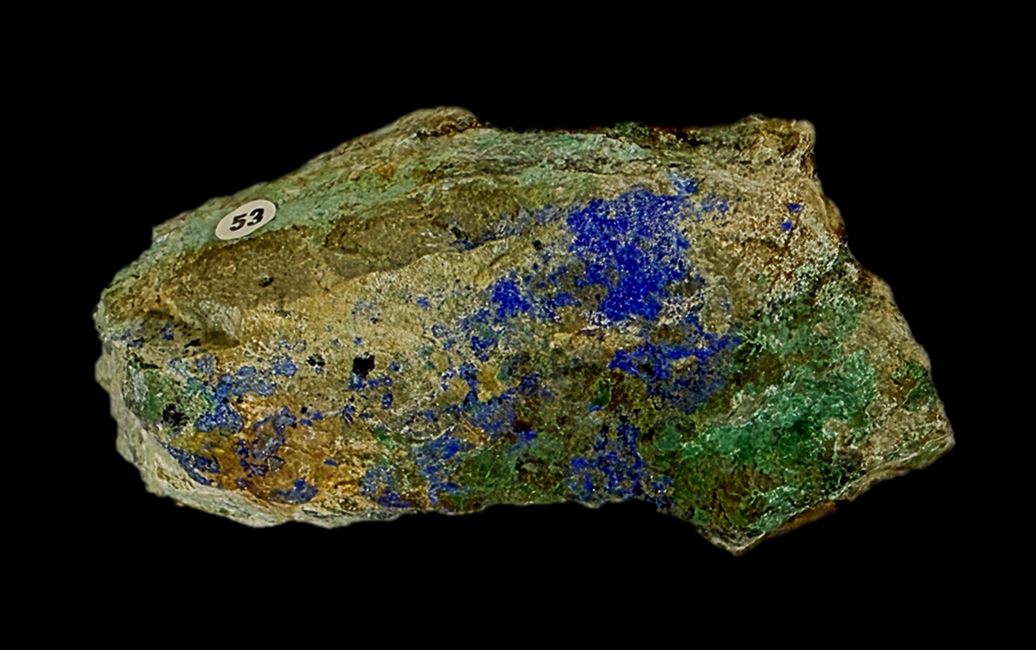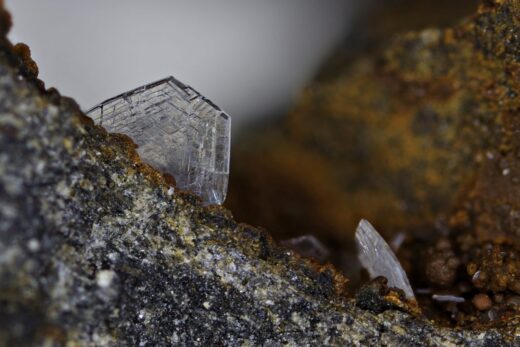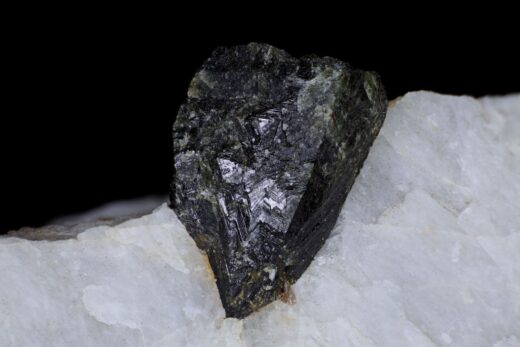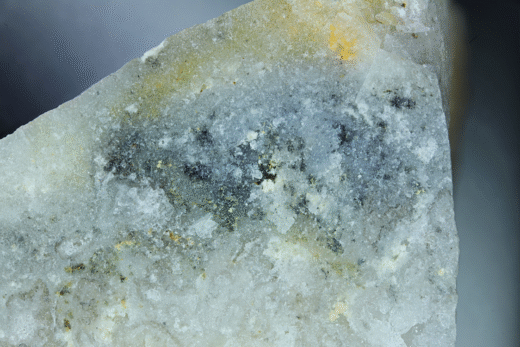Formula: Cu3(CO3)2(OH)2
From Alfredo Petrov:
AZURITE (ran-dohkoh)
- Akita: In the oxide zone of the Kisamori copper mine, small tabular azurite crystals are associated with fibrous cerussite aggregates and botryoidal malachite incrustations. At the Hisaichi copper mine, it occurs as tabular xls with large (001) faces. Also in the large limonitic oxide zone of the Osarizawa mine.
- Okayama: Thin crusts of minute azure-blue xls associated with malachite occur on limonite covering oxidized copper ores in a contact deposit at the Mihara mine. Thin blue crusts at the Hiyoshi mine.
- Shizuoka: Deep blue tabular xls to 1cm, showing (001), (221), (110) and (100) as principal faces, are associated with thin incrustations of malachite in cavities in a sphalerite-quartz vein at the Rendaiji (Kawazu) mine. Small clusters and aggregates of microcrystals are still found in vuggy quartz and limonite on the dumps, often associated with aurichalcite.
- Toyama: Azure-blue translucent tabular crystals at Kamegatani.
Below: Azurite, Malachite, “Kozu Mine, Okayama Prefecture”, Japan. Probably more likely to be the Dohgamaru Mine (道川鉱山), located within the Kozu River basin in Masuda City, Shimane Prefecture, Japan. See Mineral Matters post for the detailed explanation. Size 65x30x30mm.





